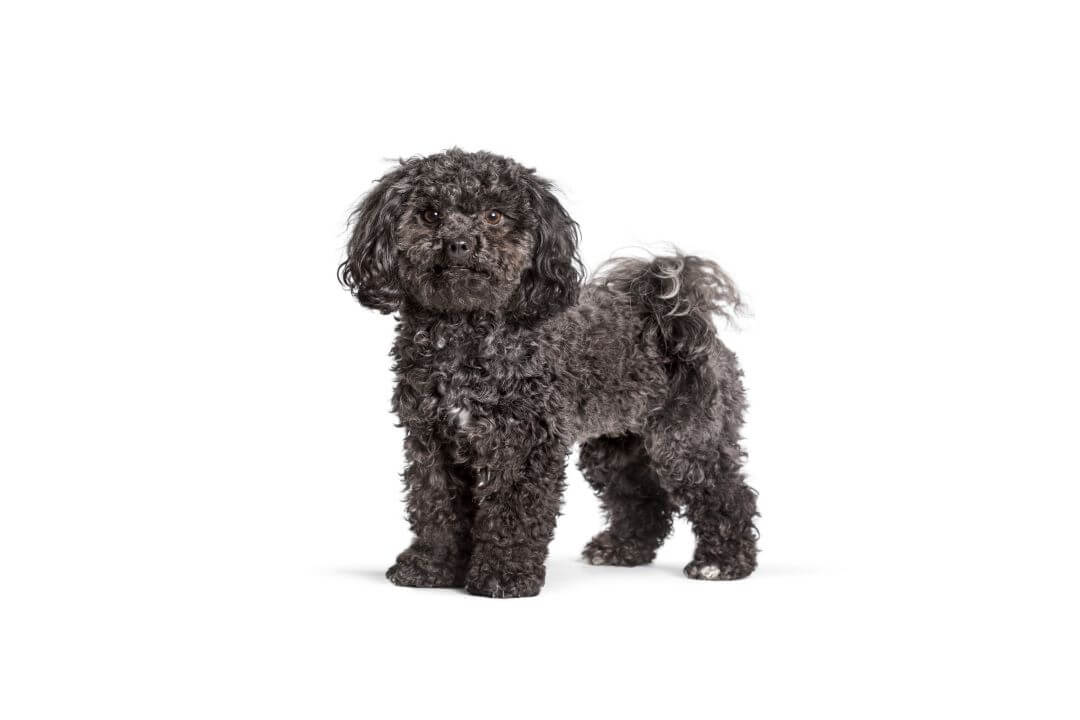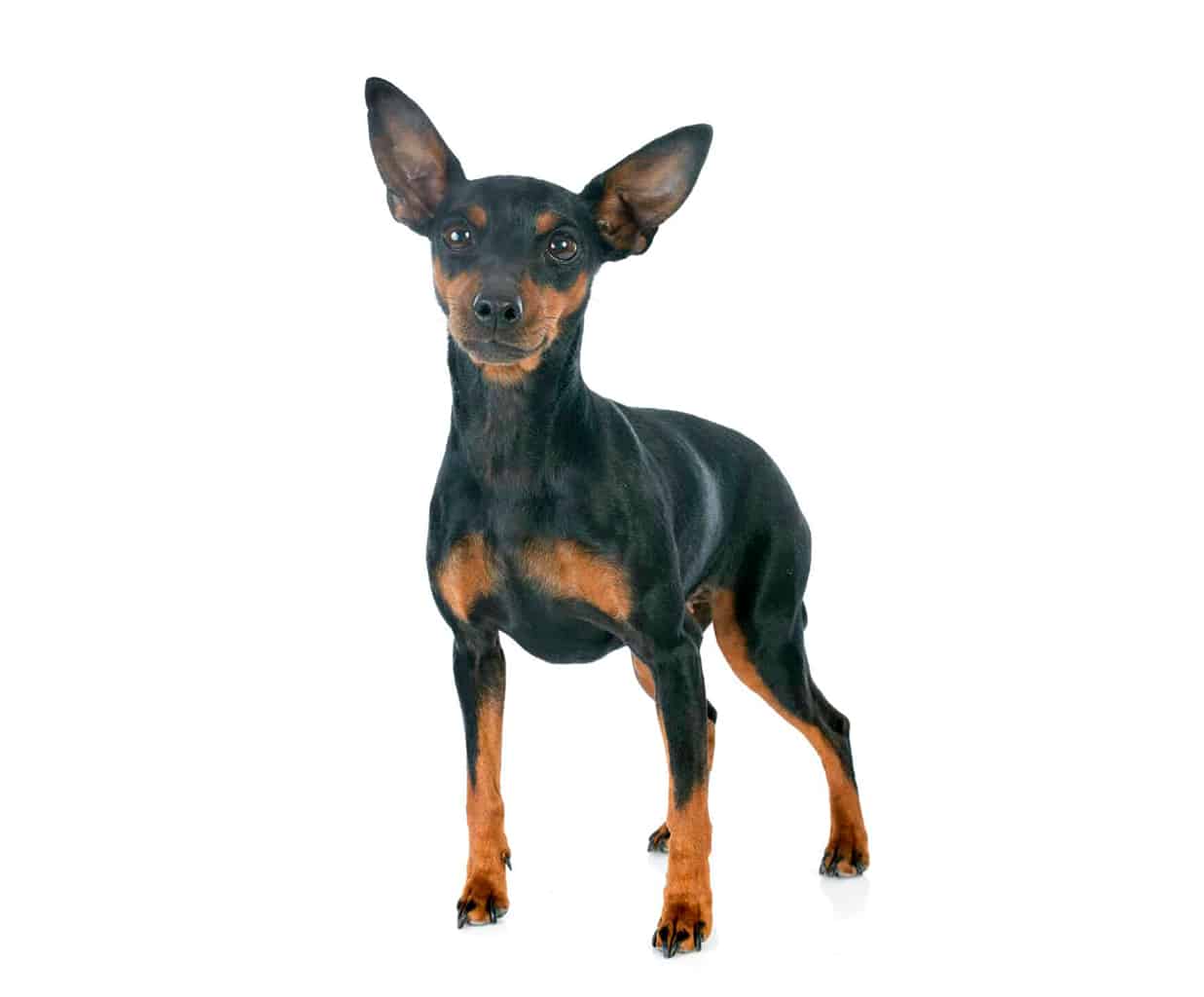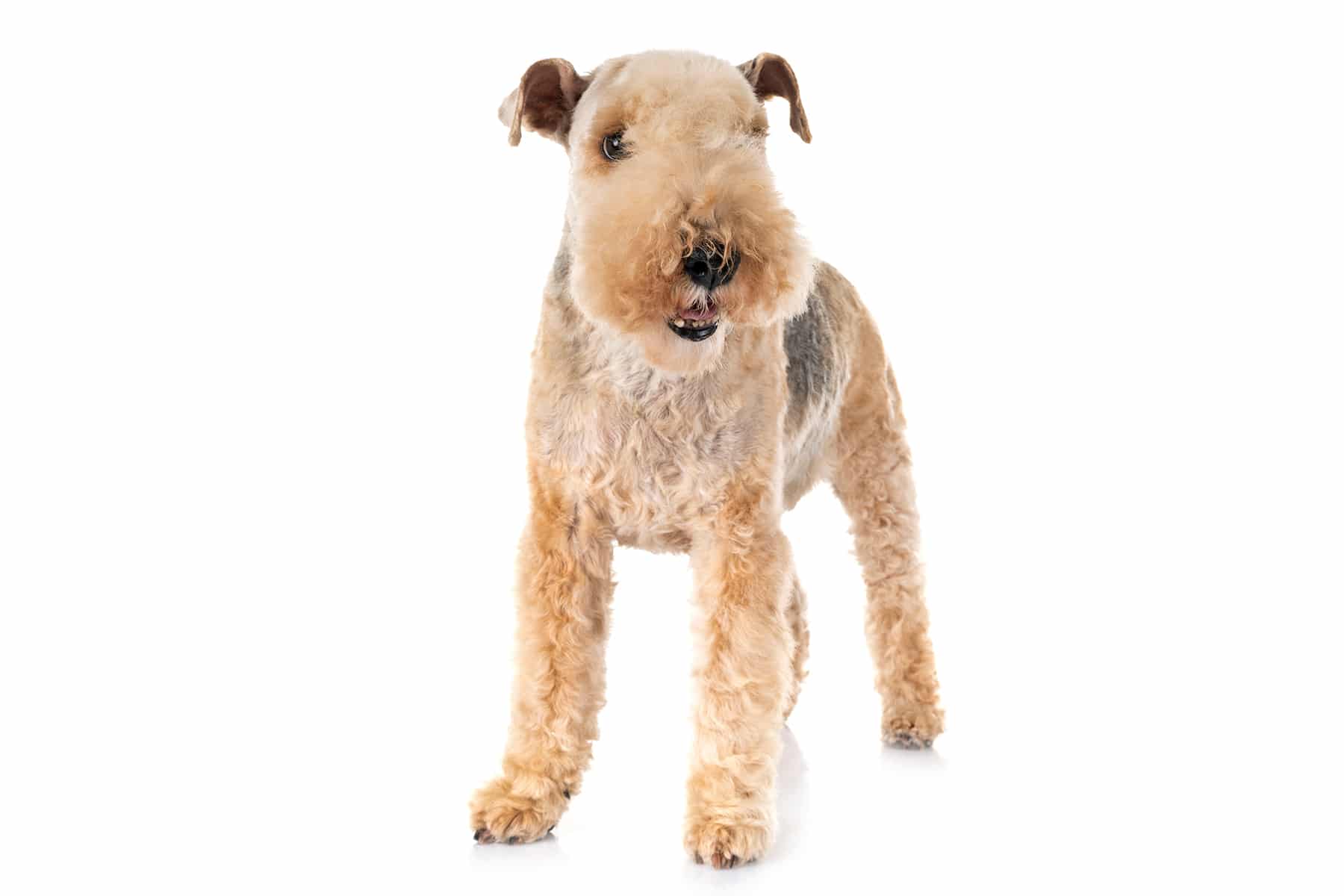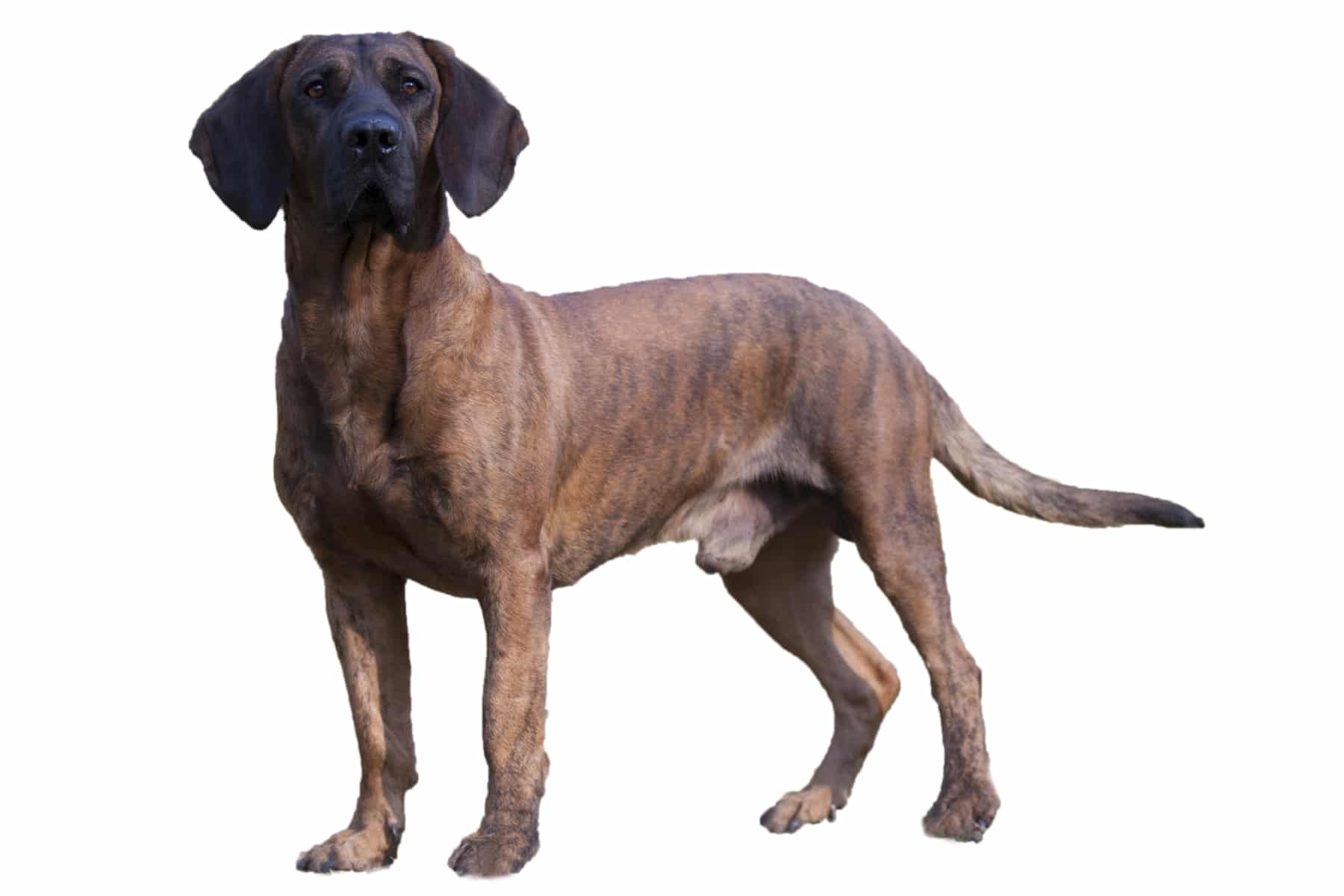German Hunting Terrier
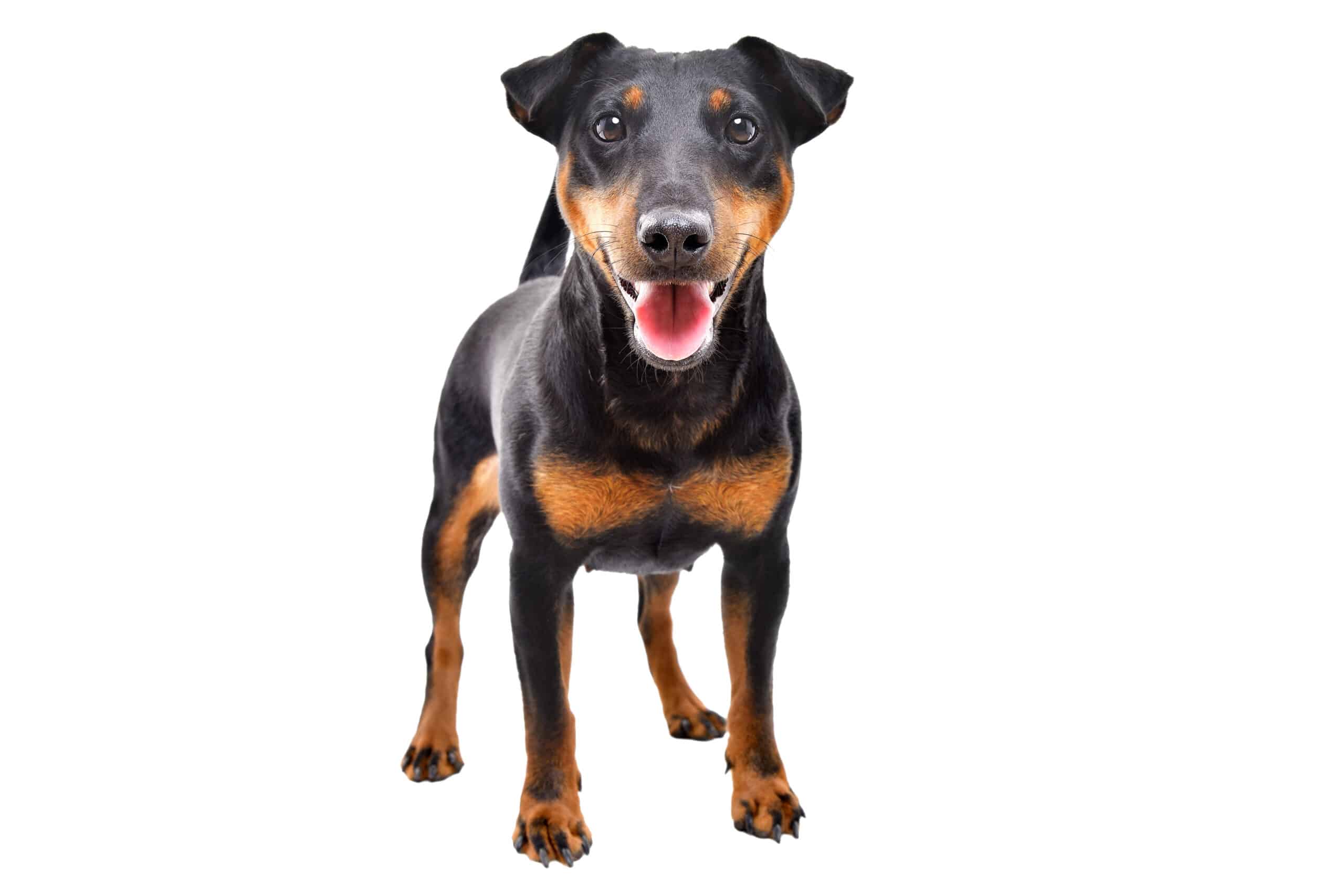
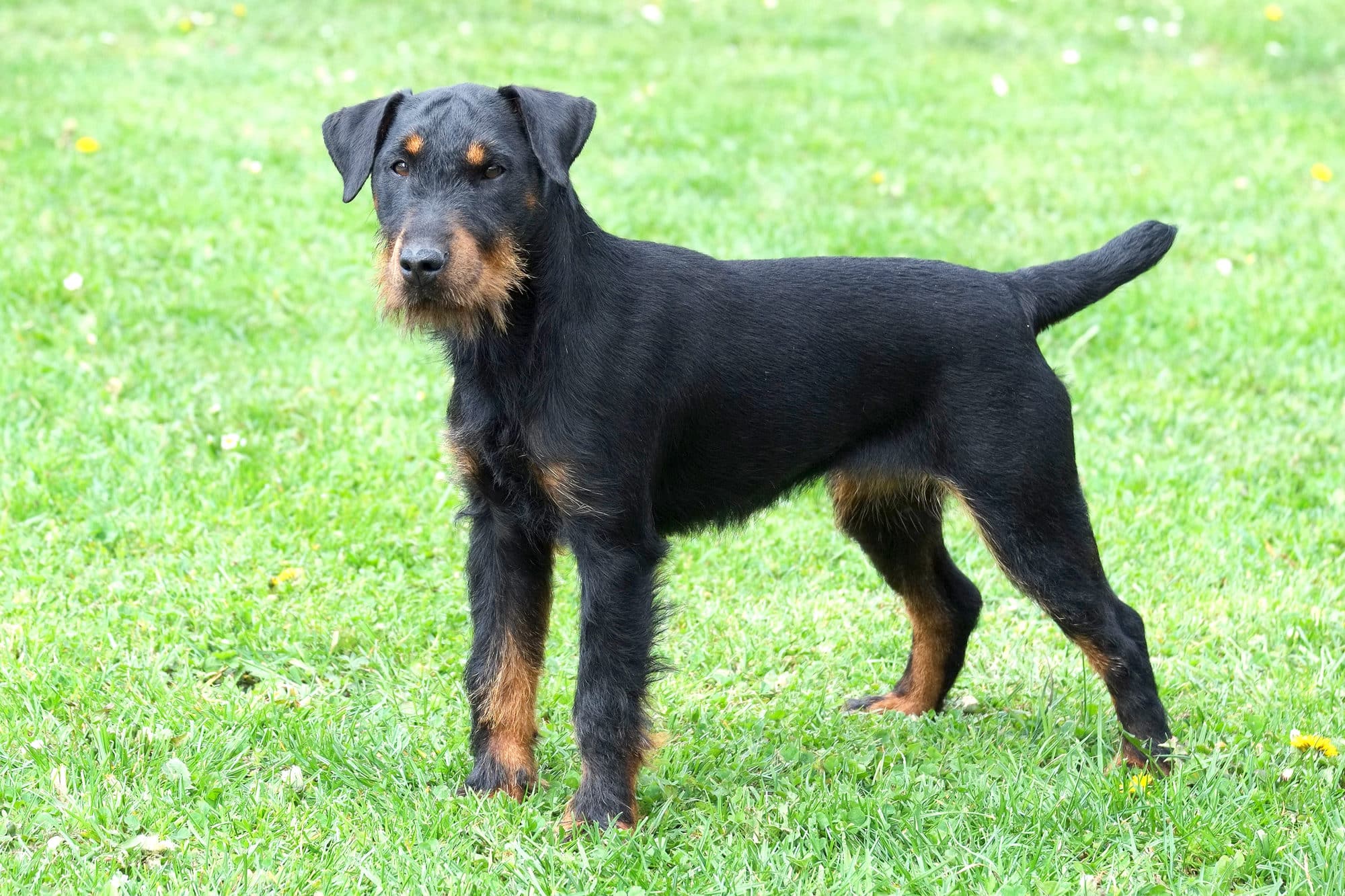
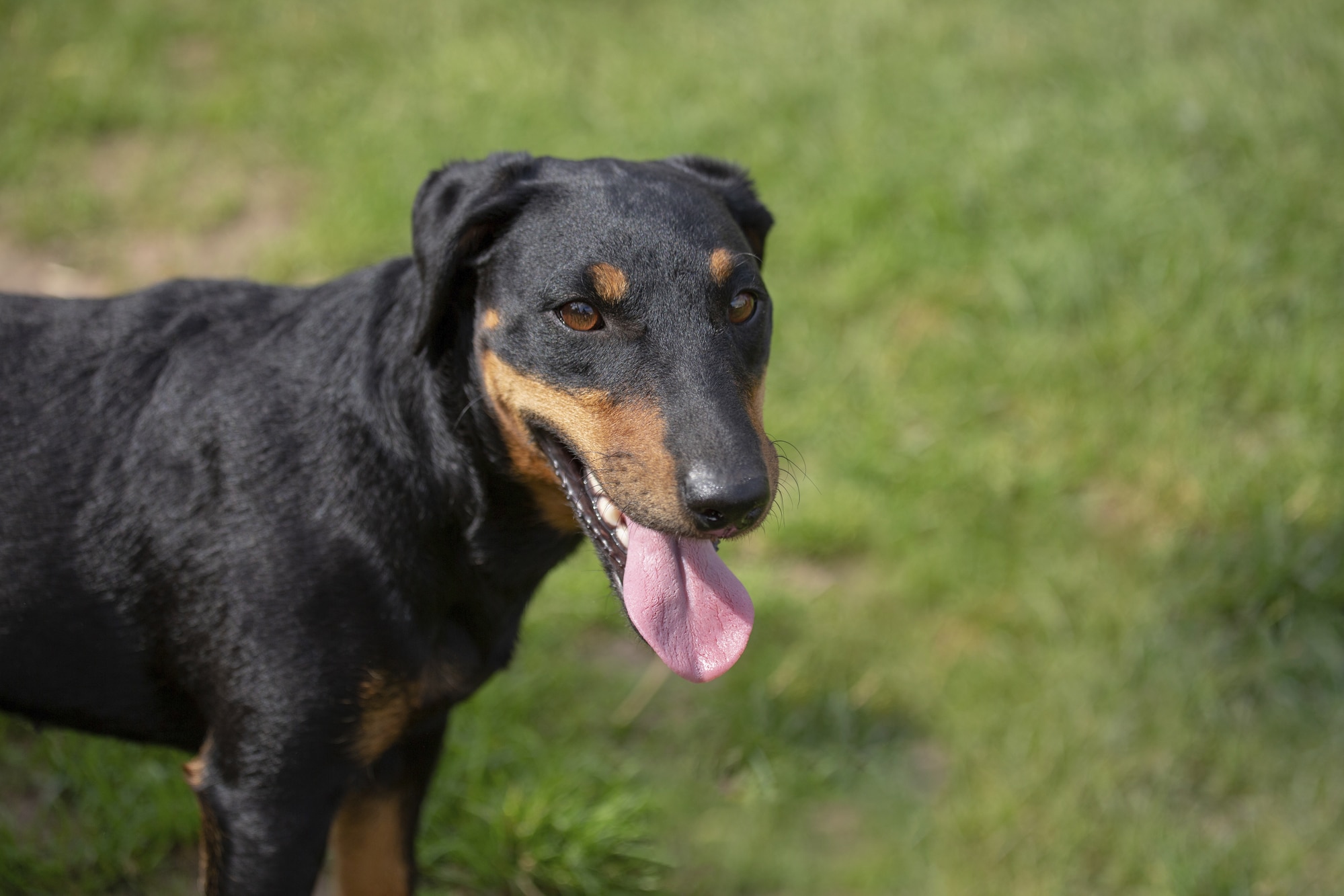
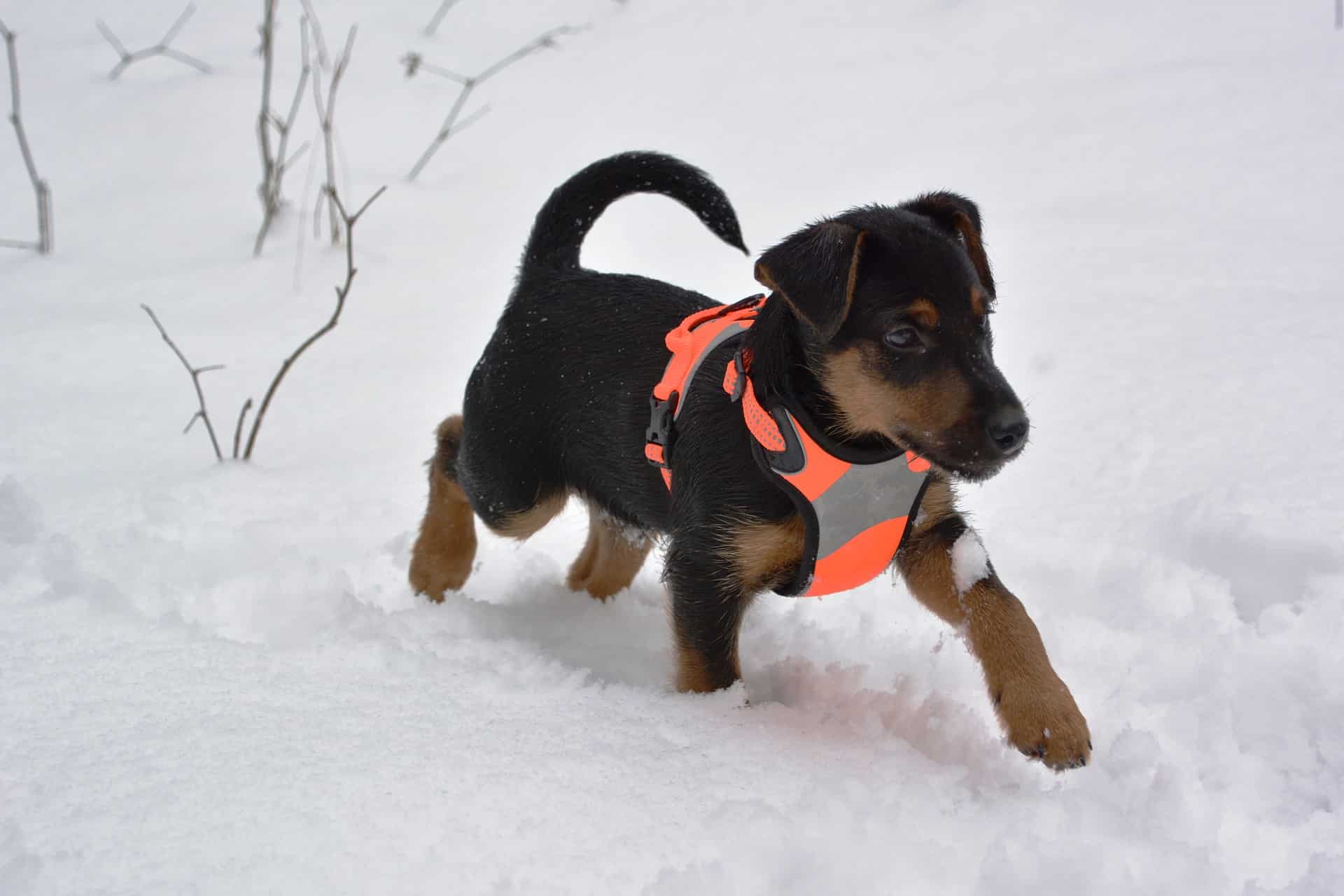
Temperament:
The German Hunting Terrier is a German dog breed. It is recognized by the FCI (No. 103, Gr. 3, Sec. 1). Although the German Hunting Terrier is very fond of children, it is not suitable as a family dog. He is persistent, spirited and vital and was bred for hunting. The German Hunting Terrier needs an owner who spends a lot of time with him in the great outdoors. You should also be able to cope with the dog's urge to exercise.
Characteristics
The small black and red hunting dog should be compact and well proportioned. The height at the withers of males and females should be 33 to 40 cm. The desired weight should correspond to the proportions and not be too light, but also not too heavy.
The coat is either dense, hard and rough or rough and smooth. A good breed can be recognized by the coat color from black to dark brown or black-grey mottled. The eyebrows are clearly defined. A dark or light-colored mask is permissible. The small eyes are set slightly inwards to protect against injury when hunting. The ears are erect at the base.
Tail docking is only permitted if the German Hunting Terrier is used as a hunting dog. Strict conditions apply for the owner. The German Hunting Terrier is strongly muscled in the loin and croup area.
The German Hunting Terrier requires consistent training. Like all terrier breeds, it can be very stubborn. If he is well trained, he is a reliable companion with a strong character. He will only listen to you as a caregiver. The German Hunting Terrier will not take orders from others. He will give you his full attention.
He can also react suspiciously to strangers. Nevertheless, the German Hunting Terrier is approachable. He is willing to learn and easy to train.
A well-bred dog must not be afraid of water and likes to swim. With its characteristics, this intelligent dog is a first-class hunting companion. It impresses with its performance.
It is trained to spot predators such as foxes and badgers and enter their dens. His good nose detects game immediately. He retrieves ducks from the water and brings shot game to the hunter.
Keeping such a specialized hunting dog in the family is somewhat problematic. He only wants to hunt. Many people are not aware of the problems. Its high performance in hunting must be taken into account. If you want to keep this dog as a family dog, this is important.
The German Hunting Terrier needs to be exercised as a hunting dog. Although he is not aggressive or shy, he is a thoroughbred hunting dog for the hunter or forester.
It is therefore difficult to buy a puppy if you are not a hunter or forester. The breeding clubs have been instructed by the German Hunting Terrier Club to only give puppies of this hard-working dog to foresters and hunters. As the club is very important to the breeders, they adhere to this rule.
Coat care:
Shedding:
Energy level:
Trainability:
Children suitable:
The right food
The German Hunting Terrier should be fed a food that meets its requirements and does not cause any deficiency symptoms. The German Hunting Terrier can cover up to 150 km a day when working as a hunting dog.
The food should therefore always be tailored to the dog's particular characteristics. This includes age, weight, activity and state of health.
If the German Hunting Terrier consumes more energy, it also depends on the intensity of the exercise as to what food it needs to eat. During a hunt lasting several hours at a trot, the energy requirement increases two and a half times. They need even more when chasing, in mountainous terrain or under stress.
The German Hunting Terrier should be fed a high-fat diet when under heavy strain. It is possible to cover its energy requirements with special food mixtures. This makes the German Hunting Terrier more efficient and puts less strain on the stomach.
Health & Care
Grooming the German Hunting Terrier is very simple. Trimming (removing the undercoat) is not necessary. Brush regularly once a day. That is enough.
It should only be bathed in extreme emergencies. Normally the dog will even bathe in lakes or rivers when hunting waterfowl. The natural oil protection of sensitive dog skin should not be unnecessarily destroyed by shampoos. If bathing, then only with special dog shampoo.
Regular checks of eyes, ears and teeth should be a matter of course.
The robust German Hunting Terrier loves the outdoors and prefers to sleep outside. It does not feel comfortable as a purely indoor dog. It is therefore perfectly possible to keep him in a kennel only. Nevertheless, he should be in the house with you and your family from time to time, because he is a pack animal. He automatically sees your family as a pack.
The German Hunting Terrier needs to be let out at least three to four times. You should be able to offer him a house with a garden so that he remains balanced. However, be prepared for the fact that the garden will not look the way you are used to from the start. The German Hunting Terrier likes to dig and your well-kept garden will be history. He can ruin hours of work in just a few minutes.
German Hunting Terriers spend a lot of time in the great outdoors. You should therefore deworm him several times a year as a preventative measure. A tick repellent should also always be in the house in summer. As a hunting companion, tick bites are unavoidable in German Hunting Terriers.
Suitable accessories
A normal collar is sufficient for the adult and trained German Hunting Terrier. He then runs less risk of getting caught in the bushes while hunting. For spirited puppies, a (hunting) harness is more suitable to minimize the pull on the neck.
A strong lead made of hard-wearing leather is useful if the dog is not allowed to run free. As a hunting dog, the German Hunting Terrier has a natural talent for retrieving. Retrieving sticks or balls is his favorite pastime.
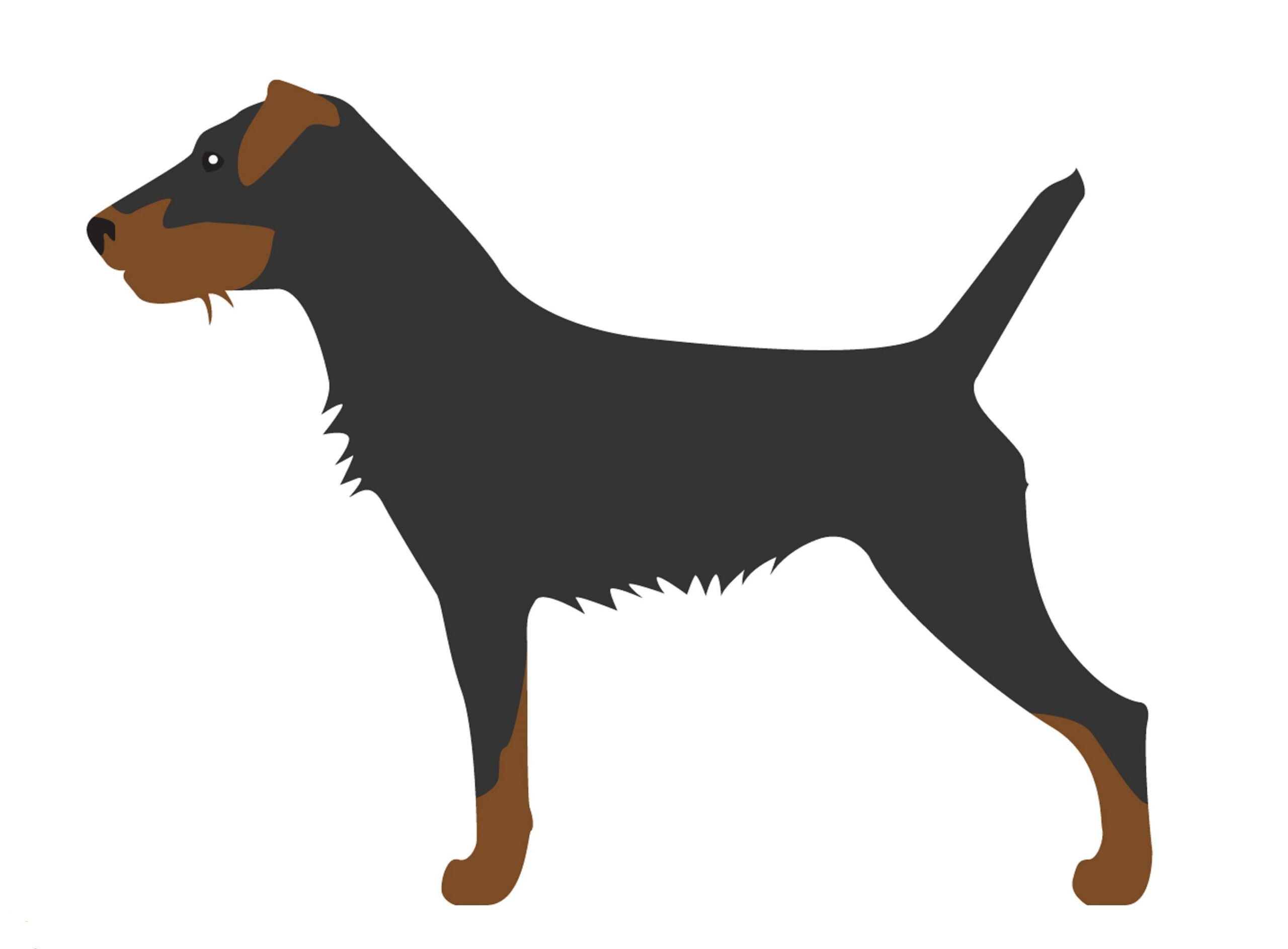
Origin & History
The German Hunting Terrier was described by the writer Daniel as early as 1760. He was also a terrier breeder. He described the two breeds, the coat, the color and the body shape as we know them today.
The painter de Wilde painted a black and red, short-haired fox terrier in 1806. It shows the color of the German Hunting Terrier, whose ancestors obviously go back to the Fox Terrier.
At that time, these dogs were bred in all possible colors. The coat was also available in a rough-haired and a smooth variant. These colors are also found in other terrier breeds today. All these variants are very close to the colors of this terrier.
Between 1920 and 1930, the fox terrier lost its hunting qualities. It was highly stylized as a fashion dog. For this reason, a group of German earth hunters separated from the sport breeding of the Fox Terrier.
This group included Karl E. Gruenewald, Dr. Herbert Lackner, Werner Zangenberg and Rudolf Frieß. They wanted to promote, maintain and improve the inherited hunting characteristics of the breed. Attention was also paid to the longer back, the muted, darker coat color and the leg position.
Werner Zangenberg bought the litter and began breeding German Hunting Terriers. Fox Terriers were crossed in to regain the dogs' full potential.
But the white color kept reappearing. Finally, Karl E. Gruenewald and Dr. Herbert Lackner succeeded in locating the Old English wire-haired terrier in England.
He had good hunting qualities and the desired color. They imported three dogs and the black and red color was finally consolidated through crossbreeding.
We owe the success of the breed to these men. The breed produced a dog with hunting characteristics that have been preserved in the German Hunting Terrier to this day.
